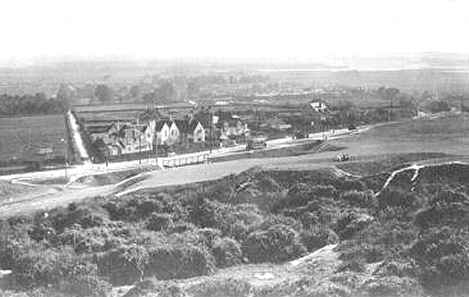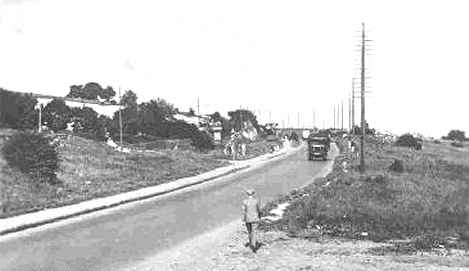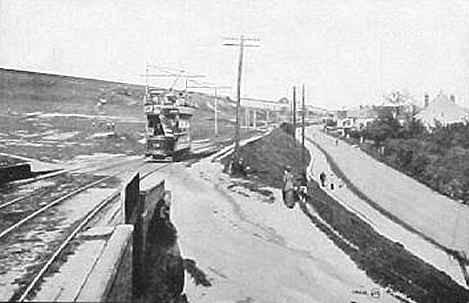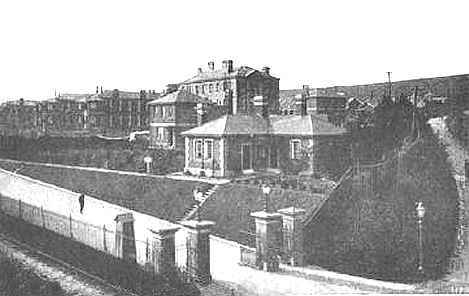|
||||||||
| Created 01-03-2004 Last update 01-02-2015 | ||||||||
|
|
||||||||
|
||||||||
|
|
||||||||
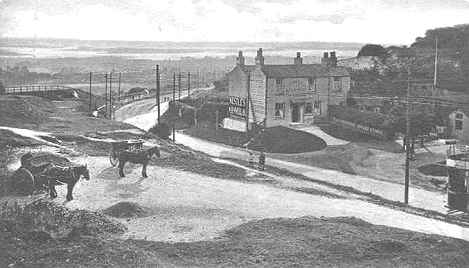
|
||||||||
|
||||||||
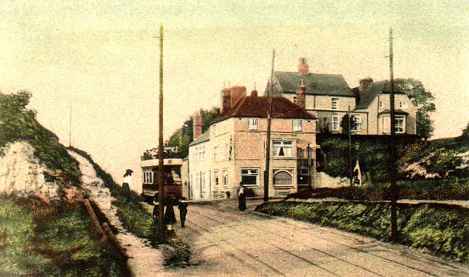
|
||||||||
|
||||||||
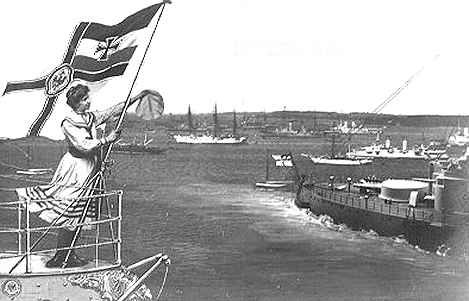
|
||||||||
|
||||||||
|
|
||||||||
|
||||||||
|
|
||||||||
|
||||||||
|
|
||||||||
|
||||||||
|
|
||||||||
|
|
||||||||
|
||||||||
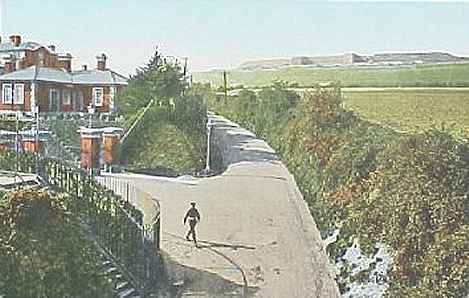 |
||||||||
|
||||||||
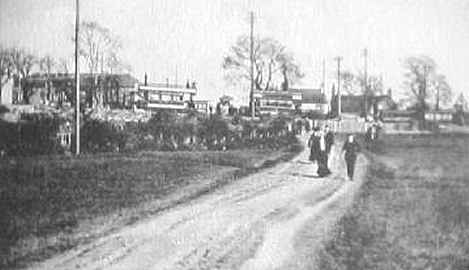 |
||||||||
|
||||||||
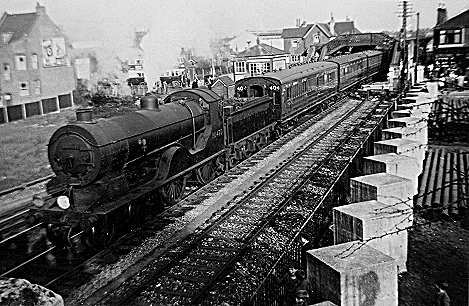 |
||||||||
|
||||||||
|
||||||||
| NEW - 07-09-2008 | ||||||||
|
I grew up in Portchester and am fascinated by bunkers, tunnels, cave etc. I have been to Normandy and Jersey and as my wife could testify I was like a little kid again running around trying to find and get into as many bunkers as possible. As a kid I remember seeing loads of things up on the hill that really intrigued me and now many years later your site has answered most of my questions and show me loads of things that I didn't know even existed. I eventually joined the army and am now posted in Yorkshire; I only get a chance to come back to Portchester every now and again to see my parents, but seeing your site has made me wish I could move back down there again. I remember many times playing in the Portchester chalk pits (my parents would have killed me if they had found out). There was still quite a bit of machinery there then, notably a conveyor belt which looked like it was used to move chalk from the back most pit to the pit which is now the housing estate. That pit was at the time all overgrown and had a caravan/shack in which I'm guessing the owner lived, he caught us once in the back most pit and it was quite exciting being chased out! A couple of times me and a few friends went further and ventured over the motorway (on the bridges!) and up the hill. We discovered the southern compounds for the Fuel Bunkers (didn't know this until I found your site) and to us it looked like the entrance to NORAD or something similar, very exciting. We also found the road below Fort Southwick that lead down to the tunnel portal No3 of the UGHQ (again I only just found out that's what it was). On the road down to the tunnel portal we found something that I can't find any reference to on your site. It was on the right of the road, the southern side, and it was about 50 – 100 meters from the flat section that the tunnel exits onto. It was a big concrete bunker type building, it is hard to describe but I will have ago. The first bit we came to was a concrete square about 5 x5 meters, then at the front of this square ( facing south) there was a 1 meter( ish) drop onto another concrete square the same as the first. Looking back I think there was a slit running along the length of the front edge, like the ones for machine guns or viewing from. (I'm a bit hazy on that part; I might just be imagining it!). To try and clear up what I am saying, if you imaging a square pill box type bunker with a viewing or machine gun slit running the length of the front, then sit another one of the same shape and size in front of it and a bit down the hill so the roofs act like two steps. On the flat roofs of these bunkers/bunker there were square openings about 1 meter square (they were covered so I'm guessing they were openings). The top bunkers opening had a solid concrete block on it and was impossible to move, and the lower bunkers opening had a wooden board screwed over it, both had the words to the effect of 'danger do not enter' written on them. It looked like the covers had been put in recently and the immediate area around the bunkers was all cleared of vegetation and trees. [I researched this area over a period of 2 years, and it turns out that this structure was associated with Portsmouth Water Company; possibly some sort of valve chamber].
I'm sorry if that was very confusing but it's quite hard to describe what
I remember especially as the details are a bit hazy. I'm not sure of the
date when we found this but it will have been between 1995 and 1997. |
||||||||
|
|
||||||||
| NEW - 30-03-2008 | ||||||||
|
I joined Hampshire Constabulary in the mid 1970s and worked from Cosham nick for 27 years. For the latter half of this time I was working as the beat copper for Wymering. My main interest in history is the Roman period, their engineering, buildings etc; but when walking around the same area for many years I became similarly interested in Wymering. Not only in the people, I was paid to do that! but also the buildings, roads and subsequently the history of that little part of Portsmouth. Like you I was amazed to discover that although there were a lot of words written about the city, the docks etc. virtually nothing about the Village of Wymering, which predates the city by hundreds of years, also before Cosham and Paulsgrove which politically have now swallowed up Wymering. I too began noting down information, and the pile of notes, maps and photos became thicker and thicker; my ultimate intention with these notes ? ? I changed to a job in Southampton and then back to Havant; but whilst not working in Wymering still living nearby and still very curious. Then we moved - to France, and consequently I had to put the notes, maps etc. away in their thick folder; eventually giving them to my daughter who lives in Purbrook and may? have an interest in continuing. Having spent a fascinating time reading your site may I share a few points that have returned to my memory, in no particular order, and obviously, without my notes.
One building is left, or was, of the Country Children's Homes that was on
the site of Portsdown Park before the flats were built. Constructed mid
1930s, I think, it was the reason for the building of the footbridge The farm to the west of the church, the flint covered house; I remember a small bridge was built into the adjacent railway embankment to enable farm traffic to move from the farm to the fields at the south side of the tracks. The three farms in this area changed names over the course of their existence, and I mean changed. It was something like the west became south and the north to Wymering, etc; I had to write all this down. There were about 8/9 changes in all - very confusing for the historian.
I had a good teastop in the Manor, at the time it was YHA, - You have
mentioned about a tunnel? originating from the church - the rumour I heard
was that it was between the church and the Manor, but having looked in the
Manor cellar with the residents there was no noticeable indication in the
wall of any irregularity. One popular story was that at one time when the
Manor was inhabited by monks and rooms in the church by nuns they could
meet discreetly, for prayers? The stonework in the cellar has been
attributed the the Roman period; and following on from one of your
comments, the two priest holes in the building are too small for me! There
were rumours of a small hidden room in the Manor; and with the residents
at the time we The sunken track north of Southwick Hill Road; near the top of the Hill I believe I remember it lies in line with Pigeon House Lane, is it an old route , used before the present road? Likewise in line with Wymering Lane is a depression in the hill which also appears to line up with P.H. Lane ; the Romans were at Wymering - and Southwick. I had copies of old maps that gave rise to this thought.
I have forgotten where I saw a reference, but there was a report of Roman
grave/building found when constructing the electricity station in Cow
Lane; also excavations in the graveyard, quite common I suppose, revealed
probable traces of a road parallel to Medina road, a suggestion was roman.
I was working in the police station on 6 October 1979 when members of the the Aviation Archaeological Group walked in the front door with (4?) mangled Browning machine guns - pilot Adiar [see here for details]. Legally these were prohibited weapons so they had to be stored at the nick although there was obviously no way that they could be used. The QA Hospital; historical reference - There is at least one marker on the boundary with W.D. stamped on it, on the bend of the P.H. Road When the wall was built around the Wymering Community Centre all the residents, and interested parties, were invited to inscribe their names into the bricks before they were fired, one of them is endorsed with the name the children knew me by, 'PC Don'
I hope my ramblings are of interest to you. My congratulations that you
have achieved what I didn't, to put into writing your fascination for the
history of this area. I will continue to rack my brains for info, and next
time I come over and stay with my daughter I will check those notes. One
thing is for certain Bob, you have here an interest that will keep you
busy for a very long time. |
||||||||
|
|
||||||||
| NEW - 30-03-2008 | ||||||||
|
As a kid we used to get into the chalk pits and go into the shelter ”caves” and get covered in chalk. I remember there used to be long pipes for the lighting in them, but not on, and we only ever went as far a day light shone. All the time we were watching out for the watchman on site. I also remember the chalk pits when they were working; the roads would be covered with chalk in the summer you just had clouds of white dust. Five doors away from us there lived a copper who had the first police dogs in the south. I believe they spent money putting this big cage in the back garden to keep them in and along side of it was a footpath that you took to get to the hill. The hill was the kids playground. Every summer it would be covered with them making dens, sliding down in on bits of wood or if you was lucky on cooker tops. There would also be kids flying kites. Or you could go over the hill and down the lane to what we called bluebell woods and then come home with arms holding tons and tons of bluebells for Mum. Later in the year we go on to the hill getting blackberries and Mum make jam for the next year, and if you knew where to go get apples so we have apple/blackberries pie. As others have said the only shops where down in Allaway Avenue; ok going there but not much fun walking all the way back up. There used to be a lorry come round every week trying to sell stuff. In them days
the kids held the roads as there where only about 10 cars in our road some
roads never had cars at all. I remember when they first run the no.3/4 bus
it came down Deerhurst Crescent then a sharp turn into Hillsley Road and
watch people jump off as it did so. One year they where saying as the road
on that turn was so bad because of the ice and snow, the bus would slide
so much they where not going to run, so every time a bus run all the kids
and mums would be putting the ash from the fires or dirt on the road just
to keep it running. No salt lorries then. I remember the shops being built
in Hillsley Road: Co-op, newspaper, sweet shop, grocery and wet fish/fish
and chip shop |
||||||||
|
|
||||||||
|
NEW - 22-03-2008 |
||||||||
|
..I am sitting here really soaking up the stories and nostalgia on your site as so many memories race through my mind. I lived in Totland road ,Cosham ,until moving to Paulsgrove and attended the Paulsgrove secondary modern school, I lived opposite the school on the corner of Truro road. My brother still lives there. My uncle Sam worked on the victory at the dockyard and I still bear the scars of colliding with the slab of seasoned oak above the entrance of Lord Nelsons cabin. Another sight to see was HMS Victory in a blaze of light and shadow in a re-enactment of Nelsons battle of Trafalgar. On leaving school I worked in Cosham high street in the fruit shop and then at Canda in fashion despatch and finally in the hairdressers in Allaway Avenue a short stroll from the Old House at Home [a pub - now converted to flats] where we spent many a cold night playing darts and sipping Babychams, and wiled away other evenings at the highly popular Hillside Youth Club. I also spent a lot of time with the Gypsies that camped by the chalkpits over the hill.( much to the despair of my parents,) but their Fairs were places of great excitement in those days. I think my mother had cupboards full of pegs to ward away bad luck. I met my husband of 42 years( Mo) when he worked as an apprentice Plater at Vospers at Portchester in 1959 to 1964.We spent many hours amongst the Rockers on motorbikes at Bert's Cafe [now Mother Kelly's] on the Southampton road. Leather was the way of life during those years. Portchester Castle was a favourite stomping ground too with rumours of horror and hauntings of headless apparitions.
I was married in 1965 and we emigrated to Australia in 1968 aged 19 and 24
with two children aged 2 years and 3 months, and life has been very hard
but we fulfilled our dream and returned to our homeland in 1998 and loved
every minute of our 7 week holiday. We never left a stone unturned
visiting and reliving my past, bringing back more stories that fascinate
our four children and 14 grandchildren. Thank you Bob for giving me
another chance to keep my treasured memories of Cosham and Paulsgrove
alive by the touch of buttons from the other side of the world. March 2008 |
||||||||
|
|
||||||||
|
NEW - 22-09-2007 |
||||||||
|
I was born in Portsmouth in the mid forties and was interested in your one-man site on the Portsdown Hill forts. I traced your site by following a link from Wikipedia. However I have some stories for you. I am somewhat surprised to read of your mention that there was no hospital in the tunnels below Fort Southwick. According to my mother's story, she was offered a job as nurse on Portsdown Hill during the 2nd World War (for no pay!), which she turned down. [See FAQs] The second story is also during the 2nd World War, whereby my father being a commercial traveller had coupons to keep his car running. One day he took my mother for a spin to on top of the 'hill', whereupon they both had to get out of the car and dive into a ditch to watch a dogfight between a spitfire and Nazi plane (there must have been a daytime air raid). It must have been a fantastic sight for the time. I believe the R & S bus route ran at the same time as the A & B bus service in the late 1940s, but did not run along Allaway Avenue but along the A27 to Cornaway Lane via Portchester Castle Street. It was the bus service 21 which ran to Paulsgrove, Hillsley Road from Hilsea Lido via the upper access roads north of Allaway Avenue (now I believe swallowed up in a longer route). By the age of 13, I considered Paulsgrove too dangerous to venture into although I had a school friend who lived in Colesbourne Road! I was a cyclist and cycled everywhere. I used to love going up the 1:9 gradient Southwick Hill Road passing the QA and past the forts to Fort Nelson and then freewheel fast down to Portchester before returning along the old A27 (pre M27 days). There were, and no doubt still are, notices affixed to some of the forts' fencing saying 'strictly no photography'. Also my father worked for the Admiralty in the early 1950s at Fort Southwick named as ASRE and then as ASWE (as indicated on Portsmouth Corporation and Southdown bus indicators).
I now live in Leicestershire, but have extremely fond memories of the City
of Portsmouth within which boundary Portsdown Hill tunnels are sited. Any
description of either can only include descriptions which are full of
superlatives - not in the UK but worldwide - and I mean it. Was it King
George V said of Portsdown Hill on which the tunnels lie, that from it was
the best view in the world? I know, eat my heart out!
Bernard Robinson - September 2007 |
||||||||
|
|
||||||||
|
NEW - 15-07-2007 |
||||||||
|
Your research and content of your site has brought back memories of years ago when I was brought up in the prefabs in Collier Road in the shadows of Fort Widley. I can't offer you any military experiences of the fort but you may be interested in the memories of a boy from 3 to 9 years old living in an area which was then shrouded in mystery and secrecy of the 1950s. I believe the fort was occupied by the Royal Engineers Bomb Disposal squad from 1954. My mother was a woman (although poor) full of fun and always joking. She said to me one day, "go up the fort and get me a soldier". Me, being a lad that was always eager to please his mum, did just that. I can't really remember what happened next, but I presume he got a cup of tea and was sent on his way. I got a clip around the ear from my dad when she told him. Mr Bert was the local Bobby and always told the kids to stay away from the fort. Kids being kids always do as they are told, don't they? Exercises were held regularly on the "hill". Walls Fun Fair came every year. Trolley Buses were still terminating at Cosham. Dr. Moon was the local doctor and Dr. Witherspoon was his partner. I cannot remember the year but if you look in the records of around 1958 you will find that a car was left on top of the hill without the handbrake on. It ended up in our back garden after landing on the Anderson Shelter. My sister was in her pram outside the back door minutes before the car landed. My mum was pictured in the Portsmouth Evening News. As the years moved on, so did we, to Leigh Park-before it was fully built. Many years have passed, I now live in Suffolk. It was back in the late 1970s that my interest in the Military History of Portsmouth was re-kindled and I made a study of the whole area including the Isle of Wight. In the course of my research I visited every fortification (except) the Sea Forts. Fort Cumberland was being used by the Portsmouth City Council. The Fort Cumberland Preservation Society was in its infancy. The defences at the Royal Marine Barracks were derelict and Lumps Fort was a rose garden. Farlington Redoubt was being used as a store by the then Southern Gas. The Hilsea Lines were mostly in a state of dereliction and Fort Fareham became an industrial estate and the Dungeon Night Club. Fort Southwick was still in use as ASWE. Fort Purbrook was in the hands of the council and was not accessible to the public. Along came 1975, when the film Tommy was released by the director Ken Russell. A good deal of filming was done at Fort Widley, above and below ground. Also during filming, South Parade Pier went up in smoke. The official line was the fire was caused by overheating of the lighting among the old wooden beams. Others said at the time it was caused by the film crew "for effect". My interest in the Military History of Portsmouth & Surrounding Area (1860 on) led me to write a book of the same name, taking over 2 years to write. The book was duly sent to several publishers but was refused by all because it was deemed that there would be no interest in the subject. One interesting publication at the time was The Coastal Defences of England & Wales by Ian V Hogg. He did note that Fort Widley was the only fortification with a Haxo-Casemate when in fact I think it was Fort Nelson [correct].
I feel so proud that someone has actually taken on the subject of the
Victorian architectural wonders and it seems to have beaten the stuffy
publishers with the help of modern technology - THE INTERNET. |
||||||||
|
|
||||||||
|
NEW - 26-05-2007 |
||||||||
|
Whilst sitting at work, bored in Australia, I decided to 'Google' the name of the road that I grew up in and lived for the first 24 years of my life (1982 - 2006 my parents still live there). Various local council pages came up for the search on Lendorber Avenue, East Cosham but the site that caught my eye was your 'Portsdown Tunnels' website.
I began to read down the 'Cosham
War Diaries' page and was absolutely fascinated to learn that the
neighbours house that I would babysit for as a teenager could possibly be
the house described as Havant Road and Lendorber Ave junction where a boy
was killed during WWII. Years later I spoke to an elderly neighbour who lived in the avenue since the 1930s and told them my story of feeling guilty for never wanting to babysit in the house on Havant Road. They informed me that a small boy was killed during the war in that house, he was put under the stairs to safety during a raid by his aunt but tragically was killed by a bomb and ironically the aunt survived. I never knew whether to believe the neighbour who I thought was winding me up, as he was always a real joker. I can now see that the story was in fact true from your website. Next time I visit home from Australia I will have to call in on the elderly neighbour and apologise for doubting him.
The family still live in that house, the boys are grown up now who I used
to babysit for, I only hope they never got the spooky feelings I used to. |
||||||||
|
|
||||||||
|
NEW - 21-05-2007 |
||||||||
|
I'm not sure quite how but, today, I happened across your marvellous website. I grew up in Farlington (Old Farm Way) and, naturally, Portsdown Hill played a large role in my childhood. I'm 41 which means that I got to play "up the hill" during the 1970s. I believe those were the best years to experience the various structures that are dotted along the hill. When I have visited as an adult, I have seen notably deterioration and the chalk pits are pretty overgrown. I used to play in the chalk pits in Farlington and Drayton. The Paulsgrove ones were a bit too far! Sometimes, instead of the hill, we would play in Farlington Marshes - this meant having to cross over the main railway line. We used to play in some of the old buildings on the railway line towards Bedhampton. On the south side of the line there are (were?) a number of pill boxes or similar WWII-era structures. Growing up, I never really appreciated everything that Portsmouth has to offer - but, now, whenever I am in the area, I make sure I catch up on things. After all, how many places can you go up a hill and see an entire city?
Congratulations and 'Thank You' for a fascinating site! |
||||||||
|
|
||||||||
|
NEW - 06-05-2007 |
||||||||
|
I have been reading your account of the tunnels beneath Portsdown Hill with interest. I grew up in Farlington during and after the war and remember the tunnel between Fort Purbrook and the redoubt. There was a small tower to the South West of Fort Purbrook, not far from the access road to the fort, that lead to the tunnel connecting the fort and the redoubt. I can remember that it was very dark and damp and that the redoubt end had been blocked at the end of the war. There was a ventilation shaft whose access was in the small copse where there are some commemorative stones to pilots that died during WW11. I should imagine that the concrete and metal cover to the shaft is still there. As children, we discovered a tunnel behind the Sunshine Inn at Farlington. We were told that the tunnel connected Fort Purbrook to some installations that are now between the A27 and the railway. Unfortunately the tunnels had been blocked both at the Sunshine end and at the installation on the edge of Farlington marshes. During the war a decoy town was built on Farlington marshes and the installation adjacent to the railway line was probably an anti aircraft battery. I remember the ROC monitoring post the western side of Farlington redoubt. We used to talk to the Observer Corps people when it was being used for exercises.
Thanks for letting me reminisce. They were halcyon days for young lads |
||||||||
|
|
||||||||
|
NEW - 13-03-2007 |
||||||||
|
I've lived in Fareham since the age of three, and can remember the view, and especially the green roofs of Paulsgrove, from a very early age. I commuted by bicycle to Horndean from January 2000 to October 2004 in all weathers. I usually used the road along the hill, turning northwards up the old A3 by The George. I've also used the diagonal Boarhunt, Southwick, Denmead, Catherington route. Either way, the climb of Portsdown was something to look forward to twice in every working day! Travelling north-east in the morning and south-west in the evening meant that I was always heading into the light. There were some amazing sun rises and sunsets. The absolute highlight of all this commuting was the crop circle just to the east of Monument Lane that appeared in 2004. I had a good look at it on its first morning, and waited while a helicopter buzzed low overhead to take photos. It was a balmy morning and I was very late for work! I then used Monument Lane on my homeward journey until the crop was harvested. The formation was almost identical to one in Wiltshire in 1996, but nobody picked up on the obvious similarity at the time. I hate what has been done to the road at Fort Southwick. This smacks of incremental development. The Park and Ride scheme just completed at Spurlings is also very unwelcome. Such things are further eroding the remoteness and rurality of Portsdown Hill. The magic of the place is being lost to street furniture and alternative use of the once semi-derelict sites that gave a strong sense of mystery and abandonment. And, over-use continues to damage the edges of what should be a quiet country lane. As a keen cyclist I often cross or ride along Portsdown Hill. It never fails to provoke thought and uplift the spirit. Let's hope they don't spoil it any more.
Portsdown Hill is now a favourite place for my children.
When asked where they would like to visit on a spare afternoon, Portsdown
Hill and Fort Nelson (with fish and chips from Mother Kelly's) are usually
top of the list. I hope that they will learn to value and appreciate it as
much as I do. |
||||||||
|
|
||||||||
|
||||||||
|
|
||||||||
|
||||||||
|
|
||||||||
|
||||||||
|
|
||||||||
|
||||||||
|
|
||||||||
|
||||||||
|
|
||||||||
